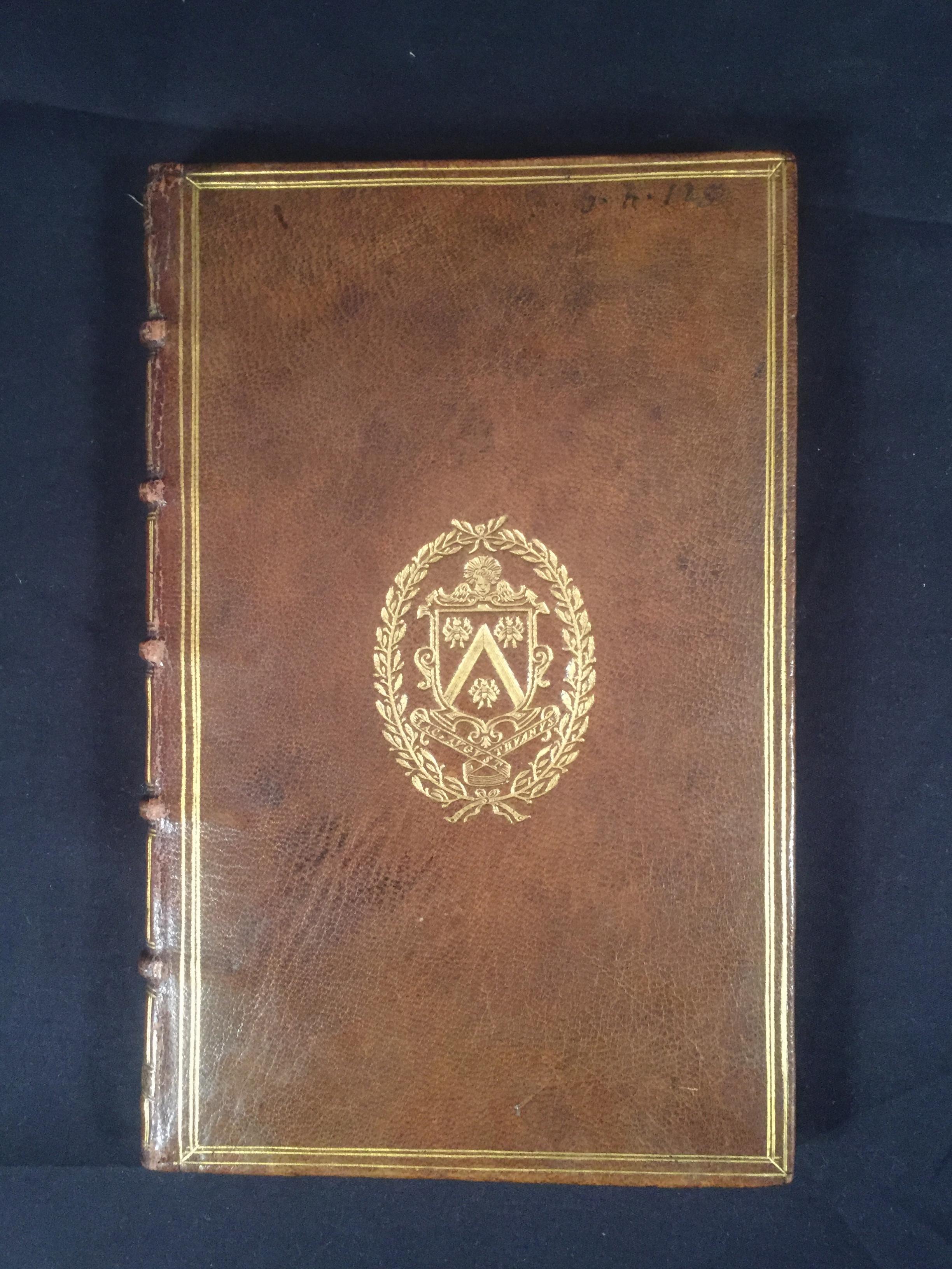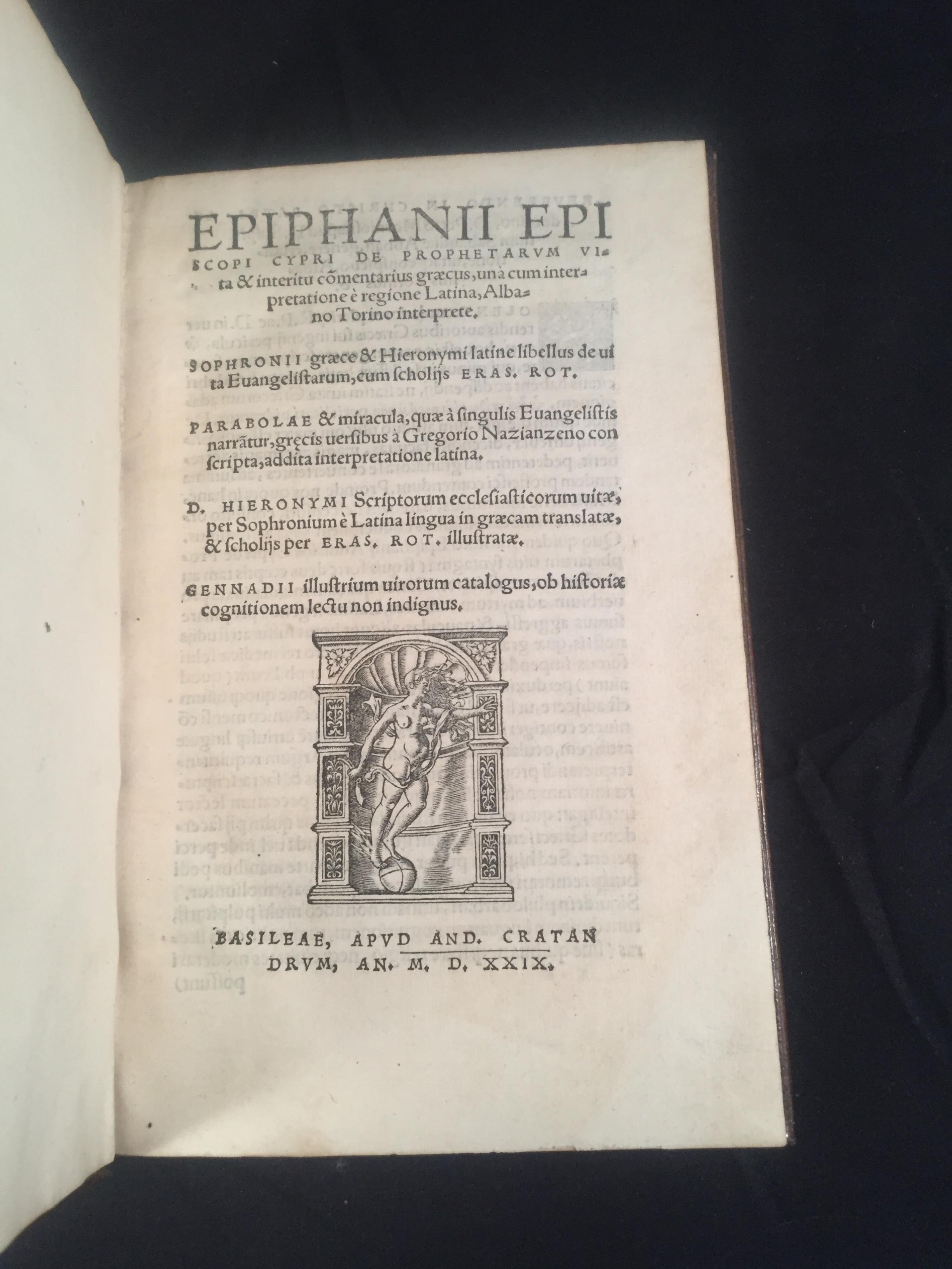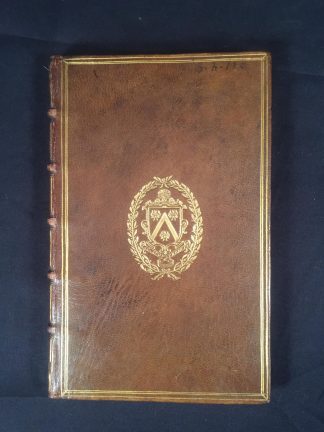EPIPHANIUS Saint, Bishop of Constantia
Basel, apud Andreas Cratander, 1529
£8,500.00
EDITIO PRINCEPS. 4to. ff. 4, pp 5-209, [iii]. a-z , A D . Greek and Roman letter juxtaposed. Printer’s woodcut device on title, another on verso of last, fine white on black criblé, floriated and historiated woodcut initials, mss. shelf mark on upper cover and at head of pastedown, bookplate of H. Dunscombe Colt on pastedown, another below. Very light age yellowing. A fine copy, crisp and clean, in beautiful 16th-century Parisian olive morocco bound for Jacques-Auguste de Thou (not later than 1587), covers bordered with a triple gilt rule, de Thou’s arms as a bachelor (Guigard II p. 452) gilt stamped at centres within olive wreath, spine with gilt ruled raised bands, double gilt ruled in compartments, De Thou’s first monogram gilt stamped to centres, title gilt lettered direct, gilt hatched at head and tail with small gilt fleuron below, a.e.g.
The beautifully printed first edition of the ‘Lives and deaths of the Prophets’ by Epiphanus Bishop of Cyprus, with the first editions of writings by two other Greek Fathers, Gregorius of Nazianzus and Sophronius, beautifully bound for Jacques Auguste de Thou. The work was edited by with a Latin translation by Alban Thorer. (1489 – 1550), physician, philologist, rector of the University of Basel, and translator and publisher of various ancient medical works. He translated the work of his contemporary Andreas Vesalius ‘De humani corporis fabrica’ into German. Thorer followed the Reformation in 1529 and taught with the lecturers Johannes Oekolampad, Bonifacius Amerbach and Oswald Bär at the University of Basel. The university closed in 1529-1532. He left Basel and continued his studies in France, at Montpellier, where Nostradamus was a fellow student. Whilst in Montpellier Thorer discovered, on the island monastery of the Maguelone, near Montpellier, an Apicius manuscript, which he later published in 1541 at Basel. “the real object of the editor and translator Albanos Torinus (thorer), a medical doctor, was to assemble all the biblical Lives and make them available in a bilingual edition not so much to act as an exemplar, but to encourage young people to learn Greek.” Irena Backus ‘Life Writing in Reformation Europe.’ The work also contains Jerome’s ‘De viris illustribus’ with the Greek translation of Sophronius and Erasmus’ notes.
This copy was bound for the French statesman and historian, “maitre de la librairie du Roi” and great book collector Jacques-Auguste de Thou. It is a fine example of a book bound for De Thou as a bachelor with his first arms and monogram, executed before his marriage in 1587 to his first wife Marie de Barbançon de Cany. The celebrated Bibliotheca Thuana was bought en bloc in 1679/80 by the Marquis de Ménars, Jean-Jacques Charron; it later passed into the hands of the Rohan-Soubise family, and was sold off in 1789 at the auction of Charles de Rohan’s collection. “The De Thou library had a reputation as the finest private collection of its day; it numbered about 6,600 volumes at his death, and was greatly increased by his children […] Most of de Thou’s books were quite simply bound, though often in high-quality morocco, with an arms block on the covers and cipher on the spine” P. Needham, Twelve Centuries of Bookbindings. This volume is listed in the sale catalogue of the Thuanus library among the theological books, “Liber de vitis Prophetarum G.L. Alb. Torino interpr. 4°Bas. 1529” (Catalogus Bibliothecae Thuanae, Paris 1679 p. 28).
A fine copy of this work in a fine, very elegant De Thou binding, beautifully preserved.
Grasesse II p. 487. Not in BM STC Fr. C16th. or Brunet. See Guigard II p. 450 - 456.In stock





